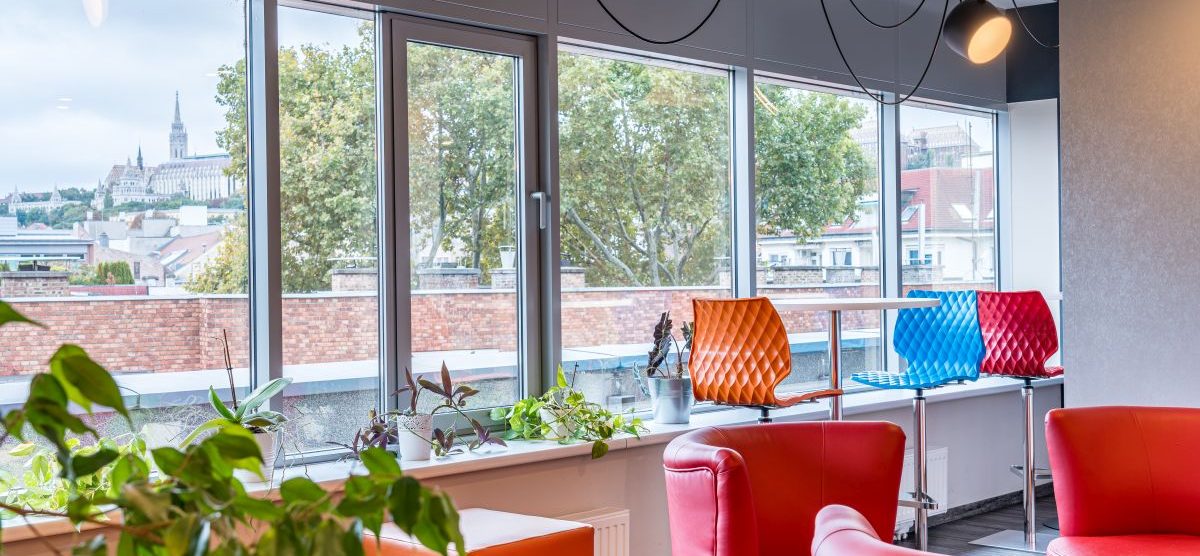How Office Temperature Affects Productivity
Balancing office temperature has long been a topic of debate among employees and employers. Whether it’s the employee shivering next to a vent or someone turning up the thermostat in the middle of summer, workplace climate affects more than just comfort. Research suggests that office temperature directly impacts employee productivity, performance quality, and overall workplace satisfaction.
If you’ve felt that maintaining a productive and comfortable workplace is as challenging as managing team schedules, you’re not alone. This blog dives into the science of workplace temperature, the ongoing debate over optimal office conditions, and practical solutions to temperature-related disputes. Finally, we’ll uncover real-world examples of companies excelling with climate-controlled strategies.
The Science of Workplace Temperature
The link between office temperature and productivity is no mere assumption–it’s supported by scientific research. Studies have consistently shown that temperature affects cognitive function, accuracy, and overall well-being.
- Ideal range for productivity
A study conducted by Cornell University revealed that employees working in an environment around 71°F (22°C) made fewer typing errors and were more productive compared to those in chillier (or hotter) settings. These findings align with other research suggesting that office temperatures between 70°F to 77°F (21°C to 25°C) foster optimal focus and productivity.
- Human physiology and comfort
Temperature influences physiological processes like blood circulation and metabolism. When employees are cold, energy intended for mental tasks is used to maintain body temperature, reducing focus and efficiency. Conversely, overly warm settings can lead to lethargy, increasing discomfort and mental fatigue.
- Gender-specific concerns
Interestingly, studies also indicate that women tend to feel colder in office settings than men. This is partly due to outdated thermostat standards designed based on metabolic rates of men from decades ago.
Understanding these physiological factors highlights why proper office temperature control matters for everyone in the workplace.
The Debate Over Ideal Office Conditions
Despite available research, achieving a consensus on the “perfect” office temperature remains elusive. Employees often have varying opinions based on personal preferences, cultural influences, and even the nature of their tasks.
Why the debate exists:
Individual comfort thresholds: While one person may feel comfortable at 72°F, someone else might argue it feels stifling. Factors like metabolic rate, clothing, and previous exposure to temperature impact an individual’s preference.
Seasonal adjustments: Employees might prefer warmer settings during winter and cooler temperatures in summer, further complicating the standardization of one ideal temperature year-round.
Task requirements: Physical-based roles vs. cognitive tasks can create different comfort demands. For instance, someone working physically at a standing desk might need significantly cooler conditions than one seated working on detailed spreadsheets for hours.
Impact on workplace productivity
Offices that fail to address temperature disparities could inadvertently reduce productivity. Employees who are too hot or too cold are more likely to experience distractions, discomfort, and even fatigue–all of which lower their performance and reduce overall job satisfaction.
Solutions for Temperature-Related Disputes
To ensure workplace comfort while maximizing employee productivity, consider implementing the following strategies for resolving temperature-related issues in the office.
Set a baseline temperature
Most workplaces thrive by maintaining thermostats between 70°F to 74°F (21°C to 23.5°C). While not perfect for everyone, this range is generally accepted as an appropriate compromise for the majority of employees.
Use zoning techniques
Larger office spaces can benefit from splitting zones into specific climates. Allow each section of the workplace to cater to slightly different temperature requirements based on employee-specific needs.
Invest in portable solutions
For employees who are consistently outside the comfortable range, offering portable remedies like space heaters or desk fans is a cost-effective option. These solutions enable adjustments without disrupting others.
Encourage layered attire
Implementing a casual dress code promoting layered clothing allows employees to self-adjust their comfort levels. For instance, providing well-insulated rooms during summer can prevent excessive reliance on blazers/jackets.
Provide real-time feedback options
Use workplace management software or surveys to crowdsource employee feedback on office temperatures regularly. Giving employees a voice in the discussion empowers collaboration and minimizes dissatisfaction.
Install smart thermostats with employee access
Smart heating and cooling technology allows employees (or managers) to control adjustments precisely, meeting conditions at certain times without overcompensation.
Case Studies of Climate-Controlled Offices
Google
Google is well-known for its employee-centric workplace innovations. The company employs advanced HVAC (heating, ventilation, air conditioning) systems tailored to create “micro-climates” within their sprawling campuses. These dynamic systems stimulate zones with varying temperatures, allowing employees to choose their comfortable working spaces.
Buffer
Buffer, a fully remote company, provides employees with home office stipends. While this setup eliminates in-office temperature struggles, they encourage employees to use the stipend to invest in home comforts like climate control features, ensuring productivity across diverse working environments.
Intelligent Office, Toronto
This co-working space invested in automated smart thermostats built to stabilize conditions automatically. Integrating data-driven adjustments based on occupancy levels and external weather conditions prevents both undercooling and overheating across floors.
These case studies demonstrate how proactive climate strategies enhance employee well-being and productivity.
Creating a Comfortable, Productive Office Today
Temperature may seem like a small detail at first glance, but it has significant implications for productivity. HR professionals, office managers, and employees must work collaboratively to find solutions that foster both comfort and performance.
By understanding the science behind workplace temperature, actively addressing disputes, and learning from companies with innovative climate-specific solutions, you can create a workplace that meets both operational and human needs.
Stay empowered to make meaningful changes–your team’s comfort and productivity will thank you.

Do not hesitate to contact us
Get in touch, if you have any question

